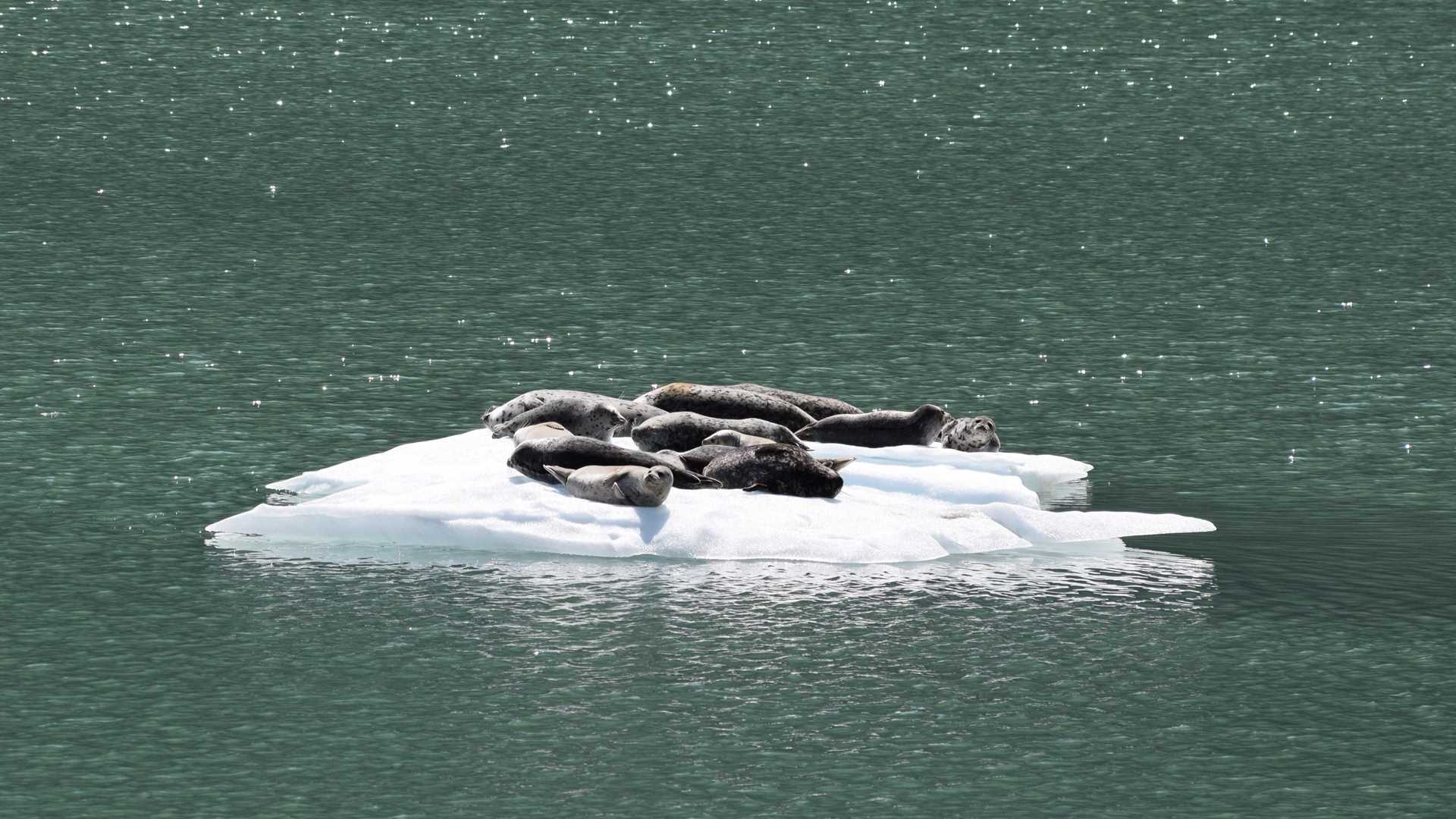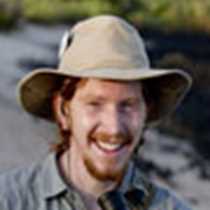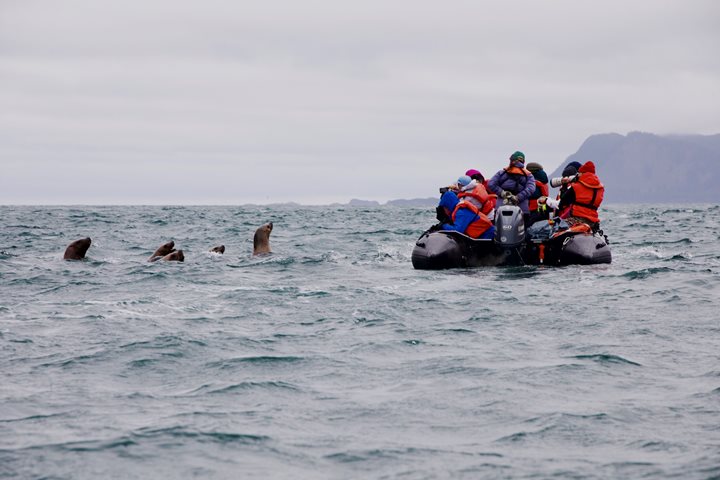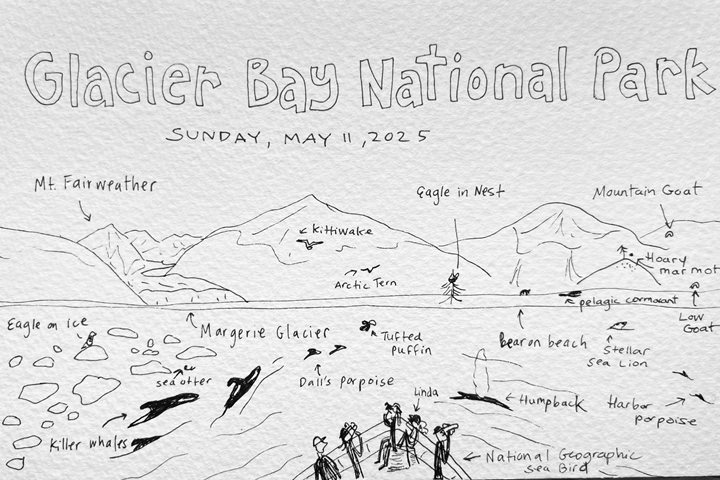7 a.m. morning stretching class was surrounded by icebergs, towering mountains, and harbor seals swimming in the icy water. A beautiful, sunny, calm day in Endicott Arm, a fjord that extends more than 20 miles east of the western edge of the Coast Mountains that rise above Stephens Passage. Stephens Passage is the main waterway to Alaska’s capital, Juneau, located about 50 miles away.
The fjord ends in a tidewater glacier called Dawes Glacier. This land and water was covered in a major ice age 18,000 years ago. The ice started receding 10,000 to 12,000 years ago before a smaller ice age emerged 2,000 years ago. This smaller ice age had the entire fjord filled with glaciers almost all of the way to Stephens Passage. Steep valleys on both sides of the fjord were once filled with ice feeding into the larger glaciers that carved the fjords.
This waterway is filled with floating icebergs of all sizes and densities. The density of the ice determines whether the color is deep blue or milky. Some floating ice floes make perfect platforms for harbor seals to haul-out on to warm up from the cold water. Pregnant harbor seals lolled about on the ice. Harbor seals give birth to one pup, once a year. They nurse the pup for about four weeks, and then the pup is on its own.
We lowered our expedition landing crafts into the water and began exploring Endicott. We were able to get right up to the glacier, where the booming from the calving ice reverberated off the steep rock walls.
Arctic terns and black-legged kittiwakes twirled and dove into the water, feeding on the small marine fish who were (unluckily) brought to the surface by the ice-calving disturbance.
Then, a hoard of wild Vikings descended on our boat and then proceeded to pour hot chocolates all around (with libations if desired). We gave the Vikings a very warm welcome when we discovered they were bearing gifts!
After we had spent the entire morning exploring the fjord, we exited our expedition landing crafts, loaded up the Sea Bird, and began a slow passage back to Stephens Passage. Here, we encountered a humpback whale and a variety of gulls, scoters, marbled murrelets, and rhinoceros auklets.









